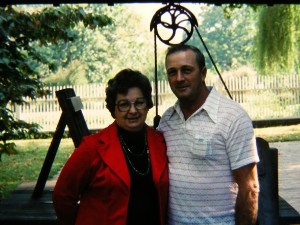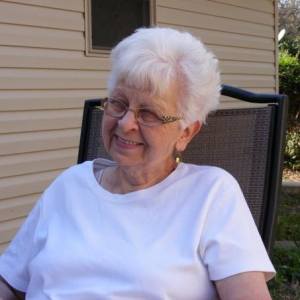May 30, 2015
“Please don’t squeeze my Charmin, don’t squeeze her so tight…”
I still remember Uncle Garland singing that chorus at many family events. We all enjoyed it, but we all knew he sang it for Aunt Ginny. You could see the twinkle in his eyes.
What is it about her that he so loved? And what is it about her that so many of us cherish?
Virginia Pedersen Chaffee is my mom’s sister, her closest sibling in age, just a year and a half her senior. Plus they were best friends. In fact, Ginny and Gar introduced her to Dad. They were a foursome.
Some of my fondest memories of visiting Arkdale included staying at the Chaffee household overnight. Everyone there was always so busy. Aunt Ginny saw to that. She kept everyone going to get accomplished all that needed to be done around their farm.
She worked alongside Garland, cooked, and cleaned, but she also corralled her brood to keep them on task. She taught them how to work and how to have fun. If you know any of my cousins, Diana, Jerry, Nancy, Linda or Carol, then you know this is true. They are all hard-working, honest people who love to have fun.
As one of the Pedersen girls, Ginny has been known to kick up her heels with her sisters and brothers. She, Mom and her other siblings have always been known to get the giggles when they’re together. It’s one of my favorite things about them, and it’s infectious. But she–as is Mom—was shy when first meeting others. I remember one dinner at my former in-laws’ home when I thought she, another aunt (I think it was Care), and Mom were different people entirely. They were so very quiet, I could hardly believe it!
But perhaps she and her sisters had so much fun together because they felt so safe with one another, which was fostered by their parents, Hans and Hilda. While they may have had a few sibling disagreementa—as anyone with siblings does–they have always known that their love for one another is constant and strong. Their bonds have stood the test of time, of laughter and joy, of divergent paths and crossing lines, and of tragedy and grief.
Ginny lost Garland much too soon; more than 25 years ago. Yet she did not allow her grief to consume her or to keep her from sharing her bounteous love with her family. Instead she upheld all that the two of them built together. She continued to work around her home to keep it shining and productive. She was always working–until her physical being would no longer allow her to mow the grass, chop the wood, plant and water and weed, then harvest the garden, cook the meals, bake the cakes, clean the house, work in the community or volunteer at the Lutheran church.
In their later years, she, Aunt Care and Mom spent so much time with Dad chauffeuring them around that they became known as “Fred and his Harem.” They laughed about that. Dad always enjoyed their company, and he knew the joy Mom has sharing in her sisters’ lives. He may not remember much about that time now, but I know he still holds a special place in his heart for Aunt Ginny.
She’s always been easy to love, easy to hug. And now we find it hard to only hold her in our hearts and in our prayers instead of in our arms. She’ll live on in her children, grandchildren and great-grandchildren, of course. But she’ll also live on in good works, in her contributions to her church and community. But even more, she’ll live in our laughter together, and in our connected family. We have been given a legacy to keep our connection strong. In her name, as well as in the names of those who’ve gone before her, we will.
Meanwhile, we can all hear the last phrase of that song being sung from the heavens as Uncle Garland welcomes her and holds her again,
“She’s soft and she’s gentle, and sweet as can be,
And if Ginny needs Squeezin’, just leave that to me!”

